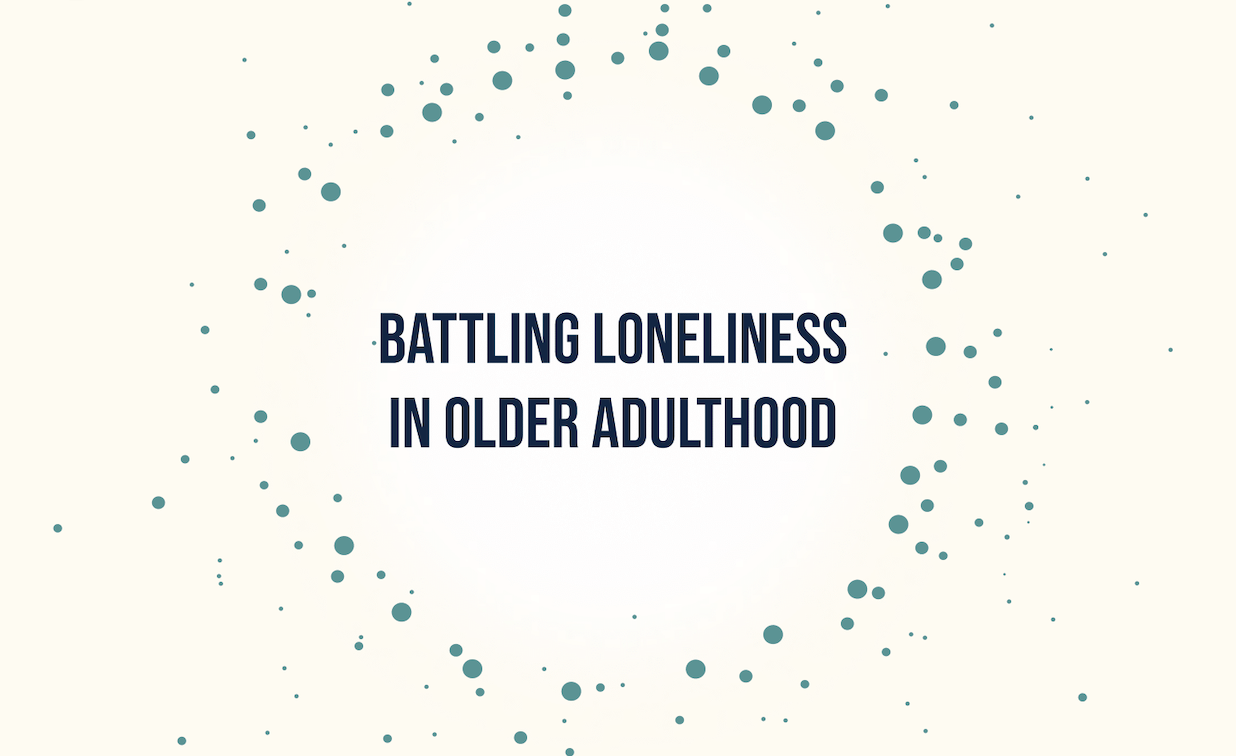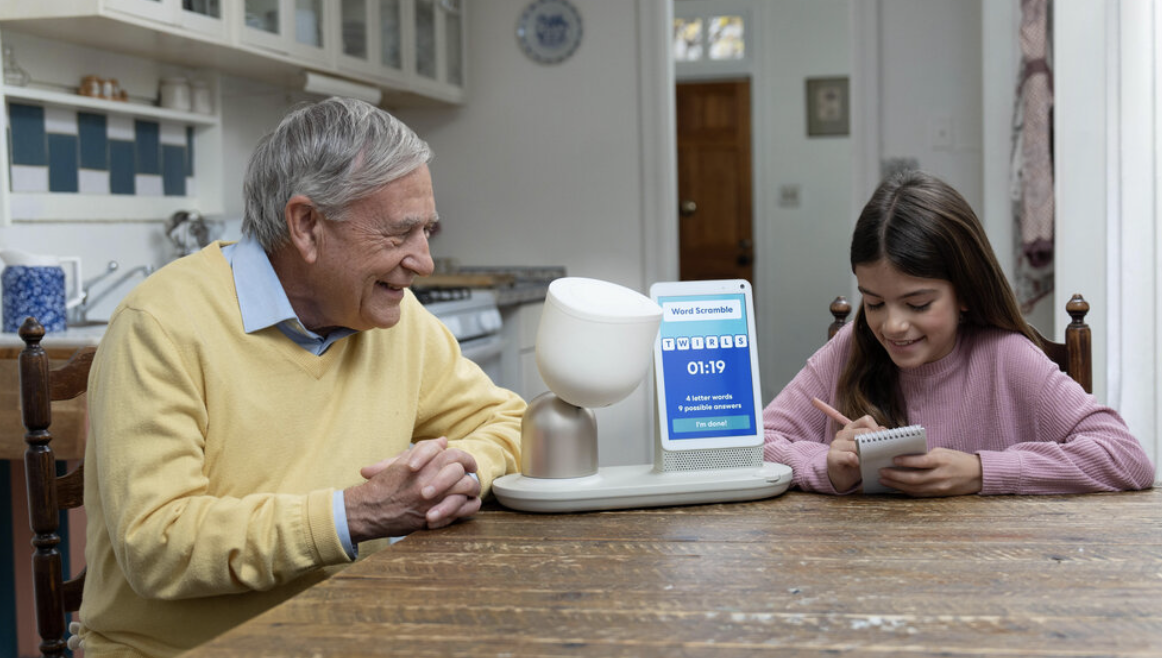How Can Seniors Adopt and Maintain a Healthy Lifestyle?
July 8, 2020 by Intuition Robotics Team
While adopting and maintaining a healthy lifestyle is always important, for older adults, it’s even more so. As we age, our bodies naturally lose muscle and functionality, thus, making us more susceptible to chronic diseases and debilitation. In fact, according to the National Council on Aging, approximately 80% of older adults have at least one chronic disease, and 77% have at least two.
By now, we’re all pretty familiar with the components involved in living a healthy lifestyle – we need to eat right, exercise, get enough sleep, and so on. Still, there tends to be a big difference between what we know we should be doing, and what we actually do. Why is it so hard for us to follow through, and engage in healthy behavior?
Though this topic is still being heavily researched and there’s no perfect, one-size-fits-all answer, a lot of it has to do with cognitive and behavioral psychology. Essentially, our past experiences, emotions, thoughts, and actions are all closely linked together – and our past experiences and emotions tend to impact the way we think and act, thus causing a disconnect between our thoughts (our desire to partake in healthy behavior) and our behavior itself.
So how can we help older adults adopt and maintain a health routine – one that actually sticks, long-term? In this post, we’ll closely examine why it’s so hard to change our behavior and form new habits, and how older adults can begin to adopt and maintain a health routine that’s sustainable over time.
Adopting healthy habits: Perceptions vs. reality
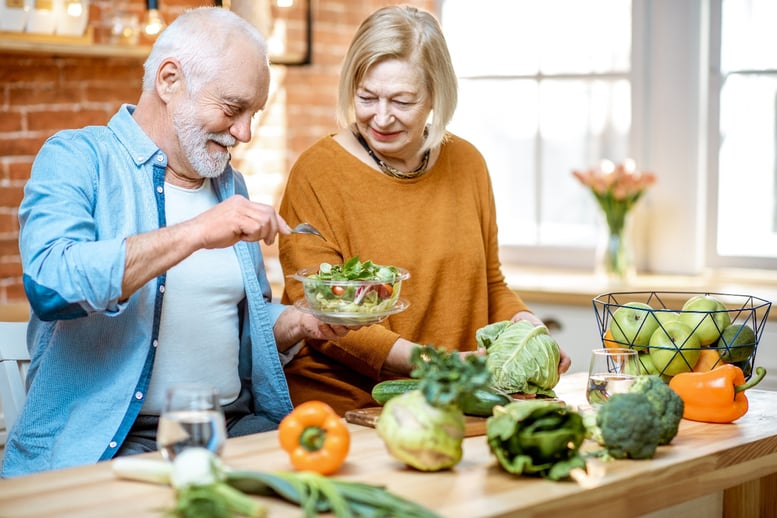
To state the obvious, leading a healthy lifestyle – especially throughout the aging process – has a variety of substantial health advantages. Studies have linked active, healthy aging to a number of physical and cognitive health benefits, including a reduced risk of developing mobility disabilities, Alzheimer's and dementia, and cardiovascular diseases, and a healthy lifestyle can lead to improved cognitive function, and even a longer life.
What exactly does a healthy lifestyle entail? Though every individual should consult with their physician before making any specific changes to their health routine, for older adults, a well-rounded, healthy lifestyle should typically include:
- A healthy, nutrient-rich diet, with ample fruits and vegetables
- Engaging in physical activity on a regular basis
- Getting an adequate amount of sleep each night
- Drinking enough water throughout the day
- Taking daily medication dosage as needed
- Stress-reducing activities (i.e. mindfulness or meditation)
- Cognitively stimulating activities (i.e. puzzles, reading, trivia)
- Regular visits to their doctor, dentist, and other healthcare providers
Why is it so hard to change our behavior?

Most older adults are pretty aware of what they should be doing to lead a healthy lifestyle – so why is it so difficult to adopt and maintain a health routine that sticks? It’s pretty simple – our thoughts and desires don’t always match up with our actions. In an ideal world, we’d be able to immediately adopt and engage in a perfect, well-rounded health routine, and stick to it flawlessly over time. Obviously that’s not the case. In order to truly change our behavior, we must first learn how to change our thought patterns – and that’s much easier said than done.
Whether we realize it or not, we’ve been conditioned to think a certain way for pretty much our entire lives. Think of a thought pattern like a river – for years, it’s been flowing a certain way, and that’s just the way it is. Getting the river to start to branch out and flow towards a new direction is possible, but it takes a great deal of time and effort. This, essentially, is why it’s so difficult to change our behavior and build new habits – our brain is so used to thinking and acting a certain way, that it doesn’t want to budge, or step outside of its comfort zone.
We can’t possibly change a river’s direction in a day, and we can’t possibly change our entire way of life in a day, either – it takes time. Making a change starts with just one little stream – one new positive thought. By replacing our negative thoughts and habits with positive ones, we can eventually sway the “river” – and our actions – towards a new, healthier direction.
Creating sustainable change

Now that we’ve explained a bit about why it’s so hard to change our behavior, let’s get to the practical components involved in adopting a health routine that truly sticks. When it comes to changing behavior, the most widely accepted model is the transtheoretical model (TTM). This model involves 5 main components, each leading to the next.
For older adults looking to create a new health routine, the TTM comes into play as follows:
- Pre-contemplation. This is the stage before the older adult decides that they want to make a change. They’re typically still unaware that their behavior is problematic, and it will take additional awareness, education, or an event to move to the next stage.
- Contemplation. Once older adults have become aware that they need to make a change, they’ll move on to this step – which could potentially last for several months. By this point, they know that they need to change their behavior, but they haven’t really begun to take any tangible steps to make the desired change a reality.
- Preparation. No one can run before they walk – so before taking action, it’s time to plan. Older adults need to prepare a strategy on how they’ll carry out their intended change. This stage can include many aspects, from preparing materials (i.e. getting fitness equipment, a gym membership, health tracking tools, etc.), to listing out all the action items needed to change their behavior.
- Action. After planning and preparing, it’s time to execute. Older adults can take action towards adopting a new health routine and lifestyle by integrating small, tangible behaviors and goals, on a daily or weekly basis, until they’ve adopted the new behavior.
- Maintenance. Nobody’s perfect, and more often than not, change isn’t linear. They’ll likely have plenty of off days (or weeks) – and that’s perfectly okay. What matters is that they keep adjusting, recognizing how far they’ve come, avoiding trigger scenarios, and not giving up, no matter how tough things may seem.
We often focus too much on the big picture, instead of on small-scale, realistic changes. This sets us up to fail – after all, the road to better health is a marathon, not a sprint. In addition to the items mentioned above, a good rule of thumb older adults can employ to adopt a health routine that lasts is to focus on one small, feasible item at a time, breaking down their larger goal into daily and/or weekly goals.
Studies show that the more specific and realistic the goal is, the easier it is for people to reach and maintain. For example, if someone’s large-scale goal is to check their blood pressure every day, they can start with the smaller goal of once per week. If their overall goal is to get 30 minutes of physical activity every day, they could begin with a smaller-scale goal of adding exercise to their routine one additional day per week, and then work their way up over time.
People also tend to focus on negative motivators – which is why they should continuously reward themselves after they achieve their small goals, in a healthy way. For example, if they met their daily goal of walking 10,000 steps, they could celebrate with a relaxing bubble bath. After successfully taking their medication on time every day for a week, they can treat themselves to some dark chocolate or a glass of red wine. Despite how small these things may seem, rewards help them recognize their accomplishments and echo the positive, so they can continue to build momentum for these healthy new habits they’re forming.
Support and encouragement
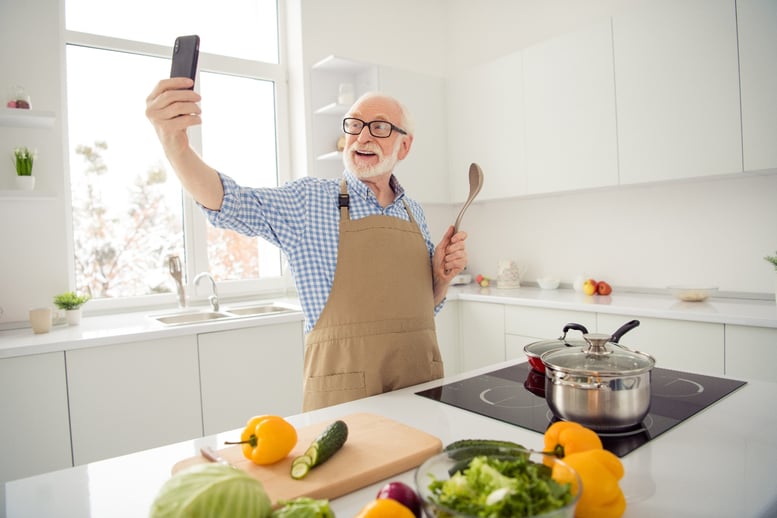
Obviously, there’s no instant, effortless solution when it comes to adopting a new behavior and health routine – as the saying goes, it takes a village. A healthy lifestyle is ongoing, and those in the process of making these difficult changes need continuous support, in any way they can get it. When attempting to create sustainable change, turning to loved ones – and the right technology – can be immensely helpful.
On the one hand, family and friends can serve as an amazing source of support and motivation. They can help out by providing inspiration, checking in, and even taking on similar changes to their own health routines. If you have an older adult loved one looking to improve their health routine, reach out and ask them how you can send your support. If you’re an older adult looking to change your health routine, don’t be shy about asking friends and family to encourage you on your journey – chances are, they’d be happy to help, and they might even be looking to improve their health routines.
When loved ones aren’t around or able to provide support, technology can actually serve quite a similar purpose, encouraging older adults to meet both their daily and long-term goals. They can utilize various apps, websites, and wearables (like FitBit, Apple Watches, etc.) to track, automate, remind, and inspire, so reaching their health goals becomes attainable – and even fun. With the right tools in place, it becomes simpler than ever to track exercise, calories, medication, and blood pressure, as well as nutritional intake, water consumption, and more.
Wrapping up
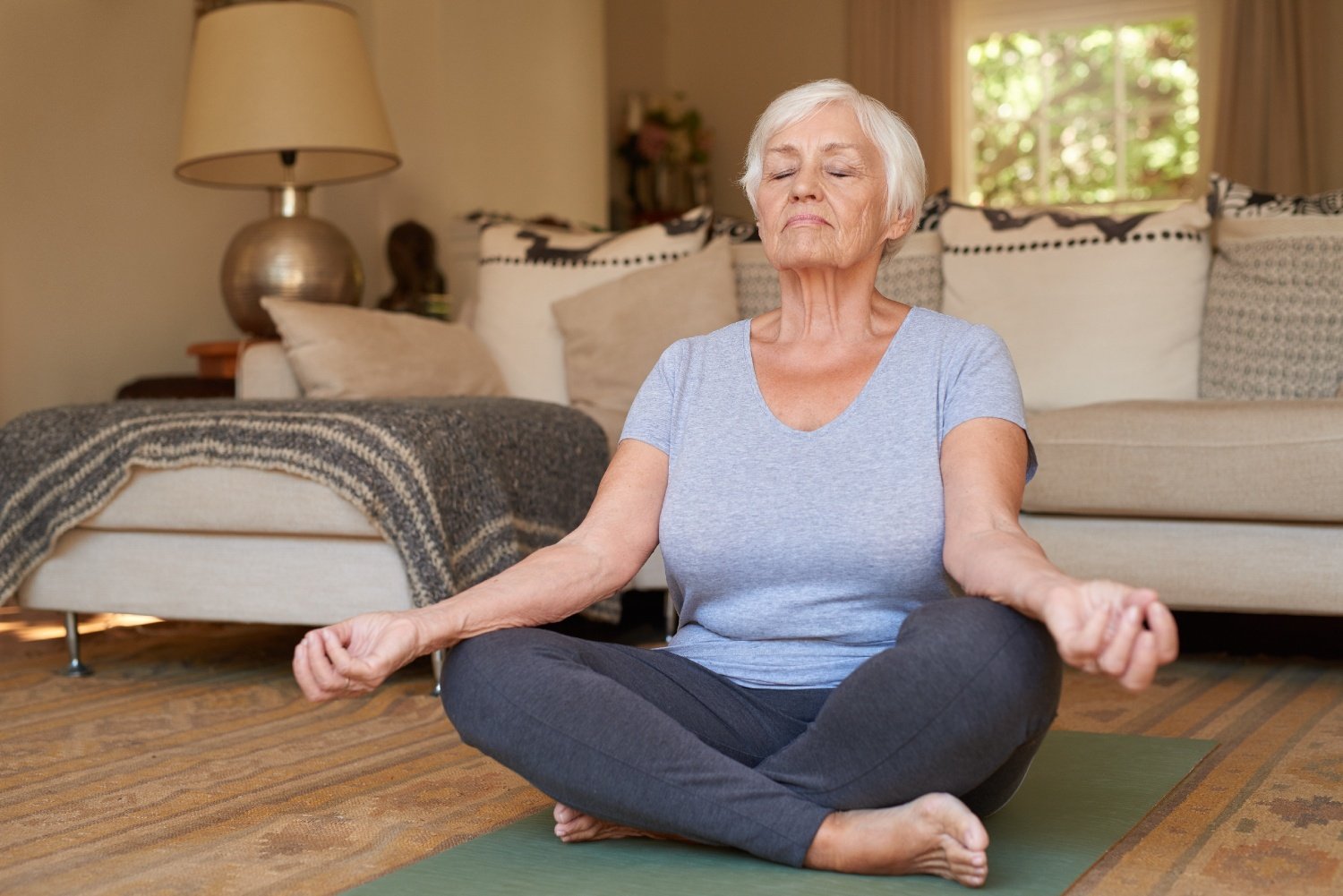
Change is never easy, and adopting a new health routine – one that actually lasts – is challenging, yet vital, for everyone, especially for older adults and those faced with chronic conditions. Yet with small, concerted changes to their thoughts and behavior, adopting and maintaining a sustainable health routine is definitely attainable.
The journey to better health is perpetual – it takes constant work and motivation to stay on track, and there’s always room for improvement. But with the right mindset, habits, and support system in place, older adults can adopt and maintain a health routine that supports their health goals for the long haul – and we’re hopeful about what this new era of happier, healthier aging will bring.
What do you do as part of your health routine? How were you able to effectively adopt and maintain new habits, and a healthy lifestyle? We'd love to hear from you – share your insights with us in the comment section below.
On an additional note, we're looking for older adults (ages 65+) to join our newly-launched Care Program to help them stay healthy, independent, and engaged at home. Through this initiative, participants will receive an ElliQ, access to a wellness coach, and concierge services for all their day-to-day needs at home. Interested, or know someone that would be? Fill out this form to sign up.
Recent posts
.png)
The benefits of an AI-driven social robot for area agencies on aging
by Intuition Robotics Team

